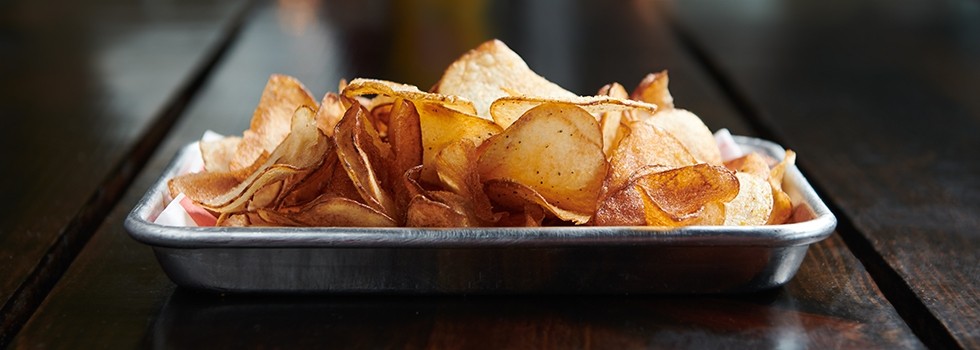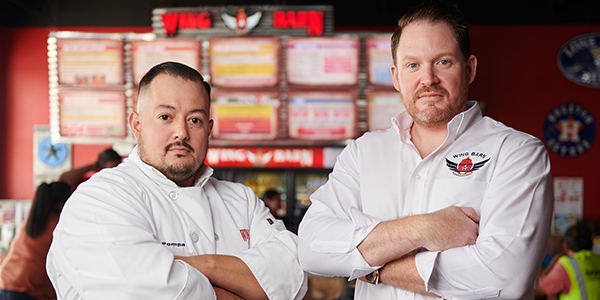Promotional Features
How a Texas restaurant improved its recipe (and bottom line) with its oil choice
Wing Barn, a country-style restaurant in southern Texas with seven locations, serves customer favorites such as hand-cut potato chips, sweet potato fries and, of course, wings. The family owned and operated business has a menu consisting of 65% fried food. To ensure customers receive the highest quality texture, taste and color, the restaurant chain depends on its frying oil.
“Frying is key,” said Daniel Pampa, the chef and co-owner of Wing Barn. “That's more than half our business. We fry onion rings, fried pickles, fried jalapeño chips, tater tots, french fries, wings, boneless wings, chicken sandwiches, bacon-wrapped fried avocado wedges, mushrooms and more.”
While choosing a frying oil for Wing Barn, Pampa notes that he considered cost, fry life and overall quality of food. After considering the options, Wing Barn switched to a blend of high oleic soybean oil and conventional soybean oil for all frying.
“I did a test run on it,” Pampa said. “High oleic soybean oil proved to match up or be better than other oils that are commonly used to fry foods. I have a longer fry life, and the food tastes better because I don't taste the oil as it gets older.”
Restaurants like Wing Barn will especially benefit from high oleic soybean oil’s extended fry life. This can be attributed to the oil’s heat resistance and oxidative stability index, which are among the highest in the industry. From this, foodservice operators can see notable cost savings. The extension of fry life is even apparent when used in conjunction with other oils.
Likewise, food service operators can see cost improvements through high oleic soybean oil’s decreased polymerization on fryers. The reduced buildup on equipment translates to less maintenance, thus significantly reducing the restaurant’s operation costs.
“The cleanup is a lot faster,” said Pampa. “I'm not getting the buildup on the sides of the fryers anymore. Before I had to scrape the fryers, but now I can just hose and wipe them down, and we're ready to fry.”
QUALISOY, an independent, third-party collaboration among the soybean industry, performed a series of functionality tests comparing high oleic soybean oil to other high-stability oils. In a 24-day frying study focused on french fries, high oleic soybean oil’s overall performance was consistent with high oleic sunflower oil and outperformed other high-stability options, such as 75% oleic canola oil. The study focused on testing for Total Polar Material (TPM), which measures polymer formation and is an indicator for fry life. At the end of the 24-day period, high oleic soybean oil showed significantly lower TPM and polymer formation than other commonly used frying oils, indicating longer fry life and reduced clean up time.
Wing Barn co-owner Bobby Saenz explained, “Every dollar counts in the restaurant business, and frying is a huge part of our menu. The food has to taste right, the price has to be right and our margins have to be in line to make us successful. The high oleic soybean oil blend definitely helps us hit the numbers we’re looking for.”
In addition, foodservice operators will appreciate high oleic soybean oil’s neutral flavor profile. With over 15 sauce choices, Wing Barn depends on the oil’s neutral flavor to allow each sauce’s unique flavors to shine.
“Restaurant operators should really consider looking at this blend because it will give them the extra edge they need in terms of fry life, flavor and overall customer satisfaction,” added Flider.
High oleic soybeans are exclusively grown in the U.S. Food companies sourcing domestically grown ingredients, rather than imported alternatives, will see reduced transportation costs and a lower carbon footprint – making them sustainable and profitable. Furthermore, the geographic diversity of U.S. grown soybeans helps guarantee a secure, year-round supply of soy-based ingredients.
Another appeal to using high oleic soybean oil is its improved nutritional profile. It contains lower saturated fat and three times the amount of beneficial monounsaturated fatty acids, compared to many conventional vegetable oils.
High oleic soybeans are on track to be the food industry’s most dependable high-stability oil solution, with high oleic soybeans projected to be the fourth largest row crop in the U.S. by 2025. Like Wing Barn, most companies are looking for ways to cut costs while maintaining high-quality products. With high oleic soybean oil, you can achieve both. Wondering where to start? Receive a tailored oils and fats recommendation from an expert today at QUALISOY.com/ingredients.





